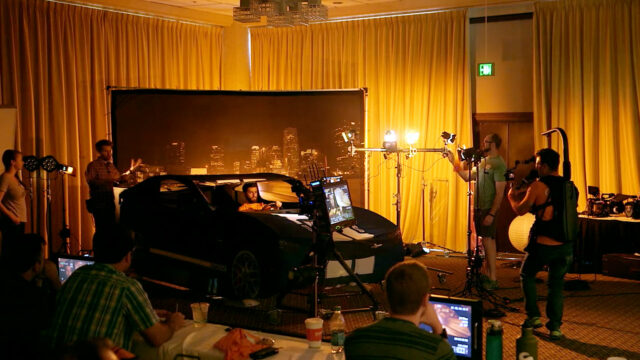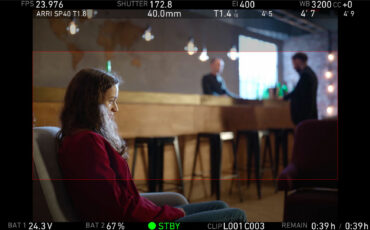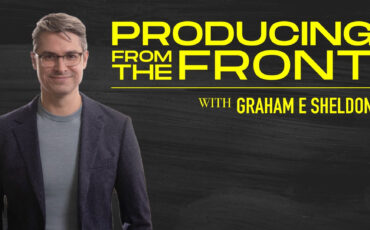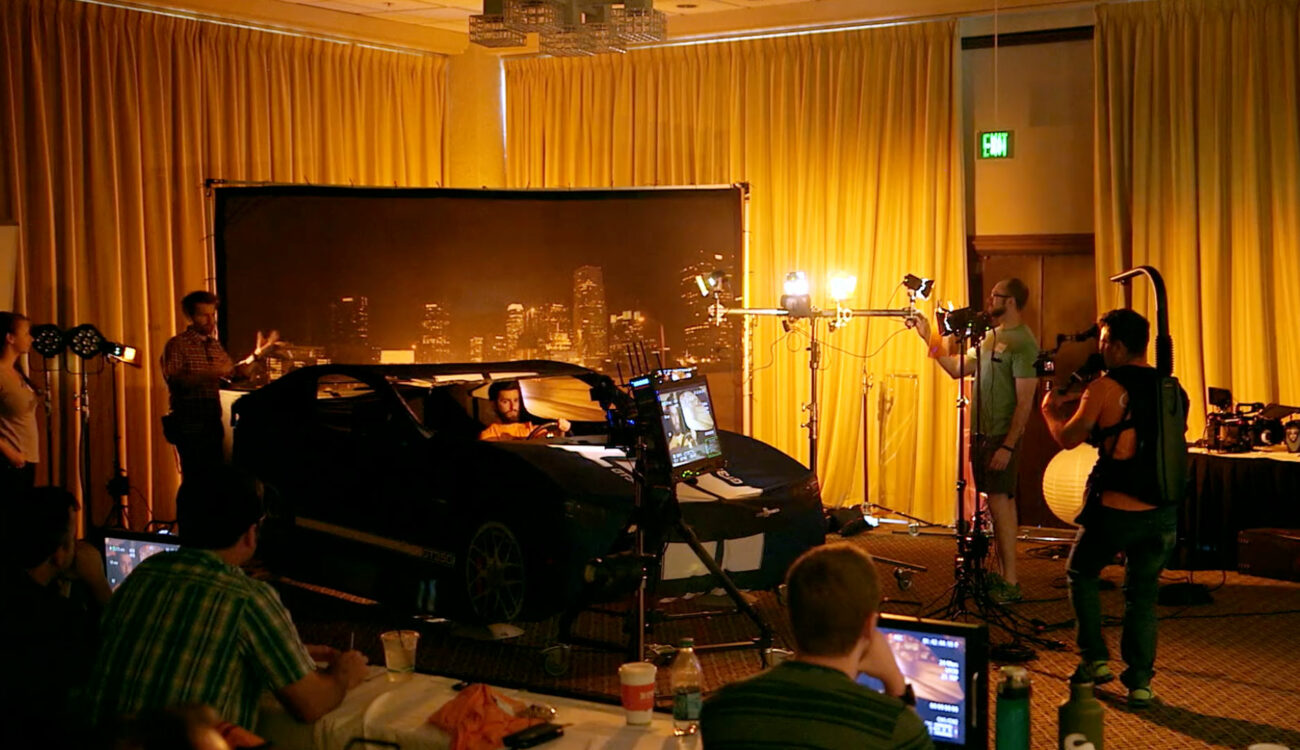
There are several ways to shoot and light a car scene, but the “Poor Man’s Process” continues to be a popular approach to safely and affordably simulate a moving car, while focusing on the actor’s performance inside the vehicle.
In the Visual Storytelling 2 course on MZed, Alex Buono runs through the various methods of filming a car scene for either narrative or commercial work. Alex is the DP for Saturday Night Live, where he’s tasked with creating full fledged productions in a matter of days, from idea to national broadcast. But he has also shot feature films and commercials, so he provides a very practical guide for anyone learning how to make a car scene come alive.
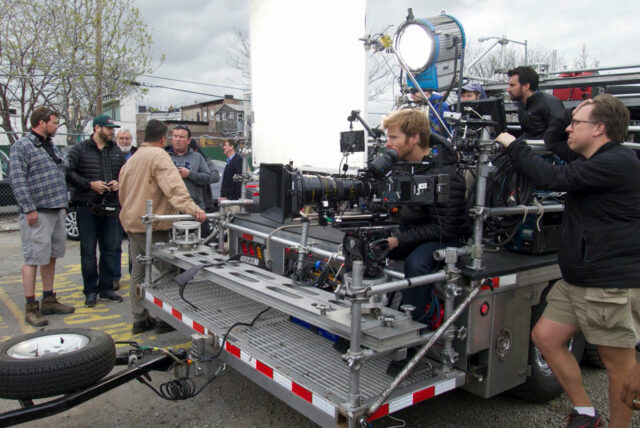
Free Driving in Independent Films
The most basic form of shooting in cars is what Alex calls “ free driving.” The actor is driving, while you’re shooting either hand-held inside the car, or you may have a camera mounted to the hood or the side of the car. This is often done in independent films, but Alex warns it can be quite unsafe, especially if you’re shooting at night.
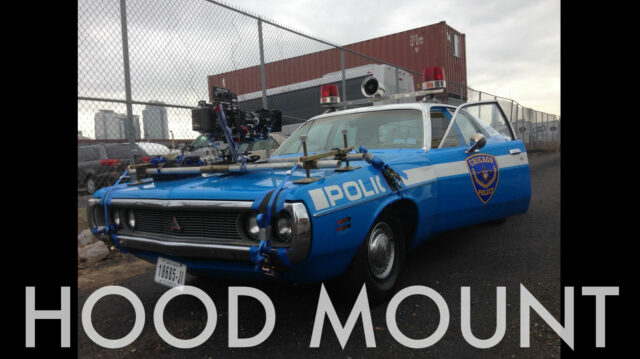
He says, “First and foremost, it can be dangerous, and the thing you want to be very careful about not doing is attempting to light your actor while they’re actually driving the car, which can be very distracting and dangerous and kind of stupid.”
Your actor’s performance will also suffer as they’re trying to safely navigate the road while trying to remember their lines and act with emotion.
The Tow Rig for Filming Car Scenes
A safer approach would be a tow rig. The car is being towed by a truck, which gives you plenty of options for lighting and shooting the scene, while also powering everything with a generator.
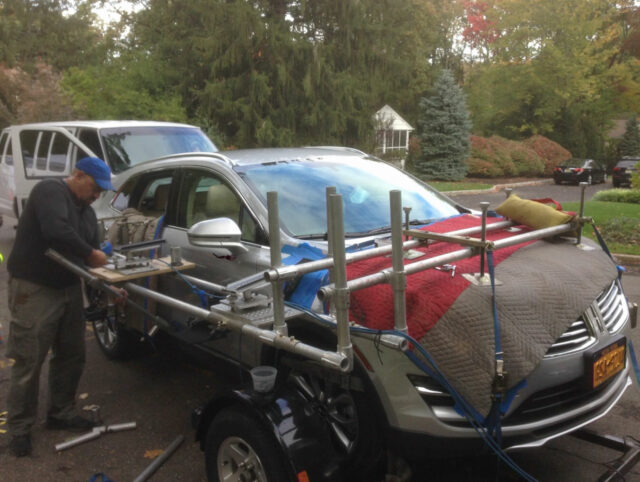
This is the method Alex used to film the Lincoln car ad, where Jim Carrey spoofs Matthew McConaughey’s famous ad spots. The lighting for that shoot needed some sophisticated reflections and camera placements, so the tow rig was the best way to achieve the look.
It’s also the same approach to shooting a motorcycle or bike shot, where either can sit on a little trailer and get towed by a truck. The subject remains at a constant distance to the cameras, so it’s easier to keep it in focus rather than have the bike or motorcycle drive behind the truck. And again, it’s safer for the actors and results in a better performance, not to mention that many actors won’t be able to realistically drive a motorcycle in the first place.
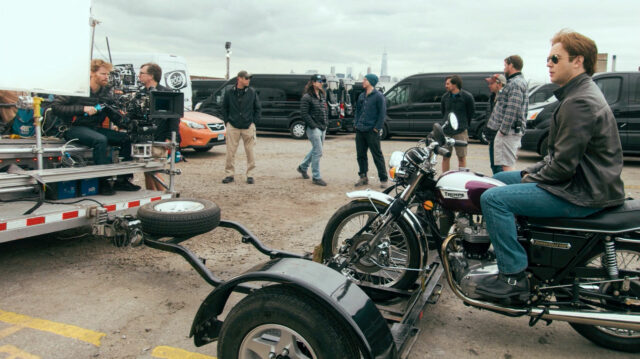
The Process Trailer for Car Cinematography
For bigger productions, a process trailer offers the highest degree of safety and quality for filming a car scene. A car goes on top of a trailer bed which is being pulled by the camera car.
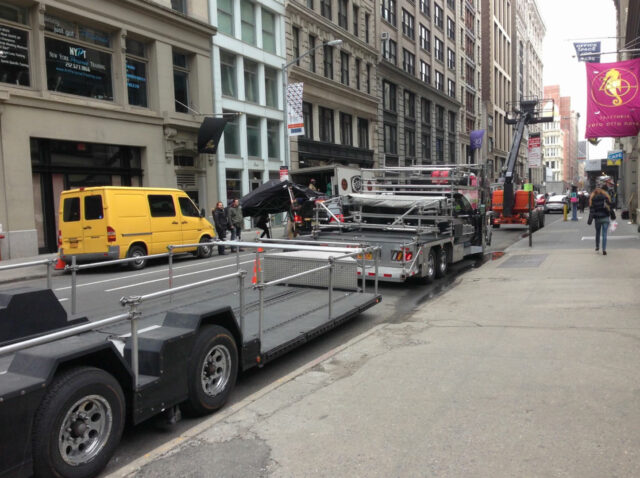
But this method can be very expensive. As Alex says, “This is a whole circus. It takes forever to rig. You need police cars to escort you through a town. You need to close off streets. It is like a big movie way to do it. It is my least favorite thing in the world to do…and at the end of the day, it’s just a driving shot.”
So while the Process Trailer is the preferred method for productions with a sizable budget, we come to a more approachable method, which is called the Poor Man’s Process.
Poor Man’s Process – The Car Doesn’t Move
In a nutshell, for this to work you’ll need to simulate the car’s motion using lights, a little bit of shake, and other illusions. You can be inside a stage with a green screen in the background, or you’re shooting rear screen projection, or even just a dark background. Or, you can shoot it outside in a parking lot. That’s why it’s called the Poor Man’s Process – it’s cheap but effective.
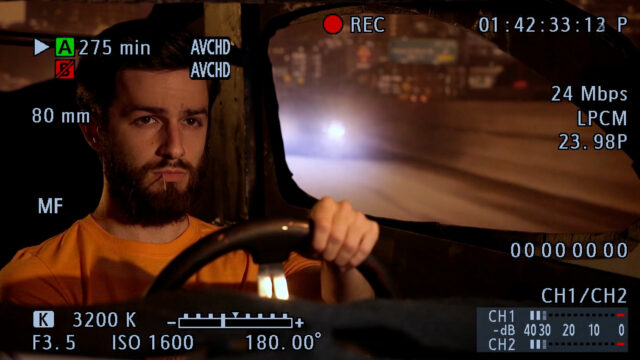
But Alex insists this isn’t only for low budget productions. He says he’s worked for Michael Bay, who uses Poor Man’s Process in big action scenes, such as Bad Boyz. The camera shakes, or someone shakes the car, while spinning lights or reflectors give the illusion of movement.
In the lesson which includes a live demonstration, Alex shows exactly how to use cheap but effective ways to simulate car movement, including Christmas lights, hairspray for haze, physically moving reflector boards to look like sunlight bouncing off the windshield, and so on.
So in conclusion, there are a few different ways to shoot a car scene where you’re focused on the actors (and not only exterior shots of a car driving). But the Poor Man’s Process continues to remain a solid industry trick to getting the best performance out of actors while using a little bit of movie magic.
Learn More about Car Cinematography with MZed Pro
There are many pieces of advice in Alex Buono’s The Art of Visual Storytelling and Visual Storytelling 2 courses that can give you amazing insight into how to affordably and effectively shoot commercials, narratives, and even documentaries. These courses were filmed during worldwide workshop tours, but now you can watch them from the comfort of your home and at your own pace.
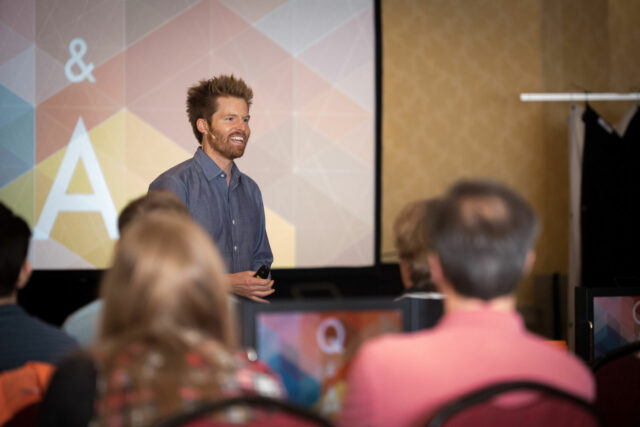
As an MZed Pro member, you get access to nearly 300 hours of filmmaking education, plus we’re constantly adding more courses. For just $30/month (billed annually at $349), here’s everything you’ll get:
- 42 courses, over 500 high quality lessons spanning nearly 300 hours of learning.
- Highly produced courses from educators who have decades of experience and awards, including a Pulitzer Prize and an Academy Award.
- Exclusive access to ARRI Academy online courses.
- Unlimited access to stream all the content during the 12 months.
- Offline download and viewing with the MZed iOS app.
- The majority of MZed courses provide an industry-recognized certificate upon completion.
- Purchasing the courses outright would cost over $9,800.
- Course topics include cinematography, directing, lighting, cameras and lenses, producing, indie filmmaking, writing, editing, color grading, audio, and even how to launch a YouTube channel.
- 7-day money back guarantee if you decide it’s not for you.
- After the first year, the annual renewal rate is $199, a savings of 57% from the new member rate.
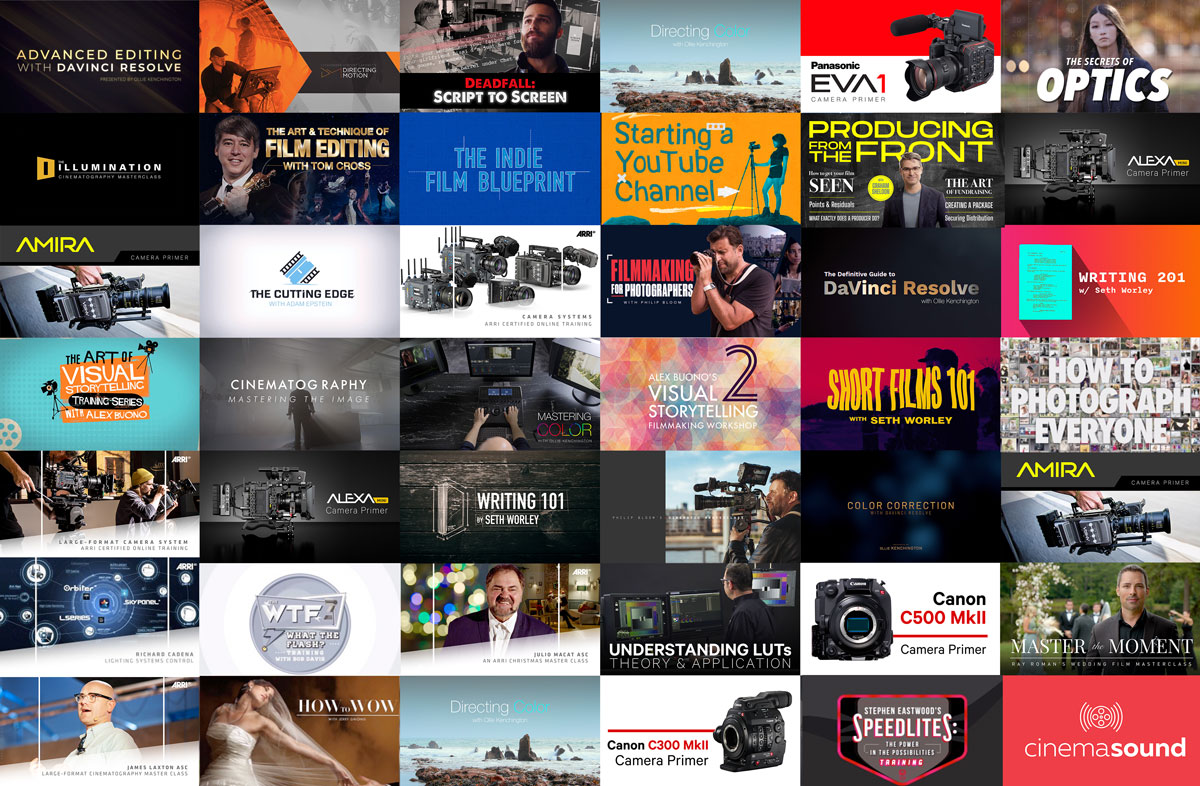
Join MZed Pro now to get started!
Full disclosure: MZed is owned by CineD
What’s your favorite method of car cinematography? Share your thoughts in the the comment section down below!
